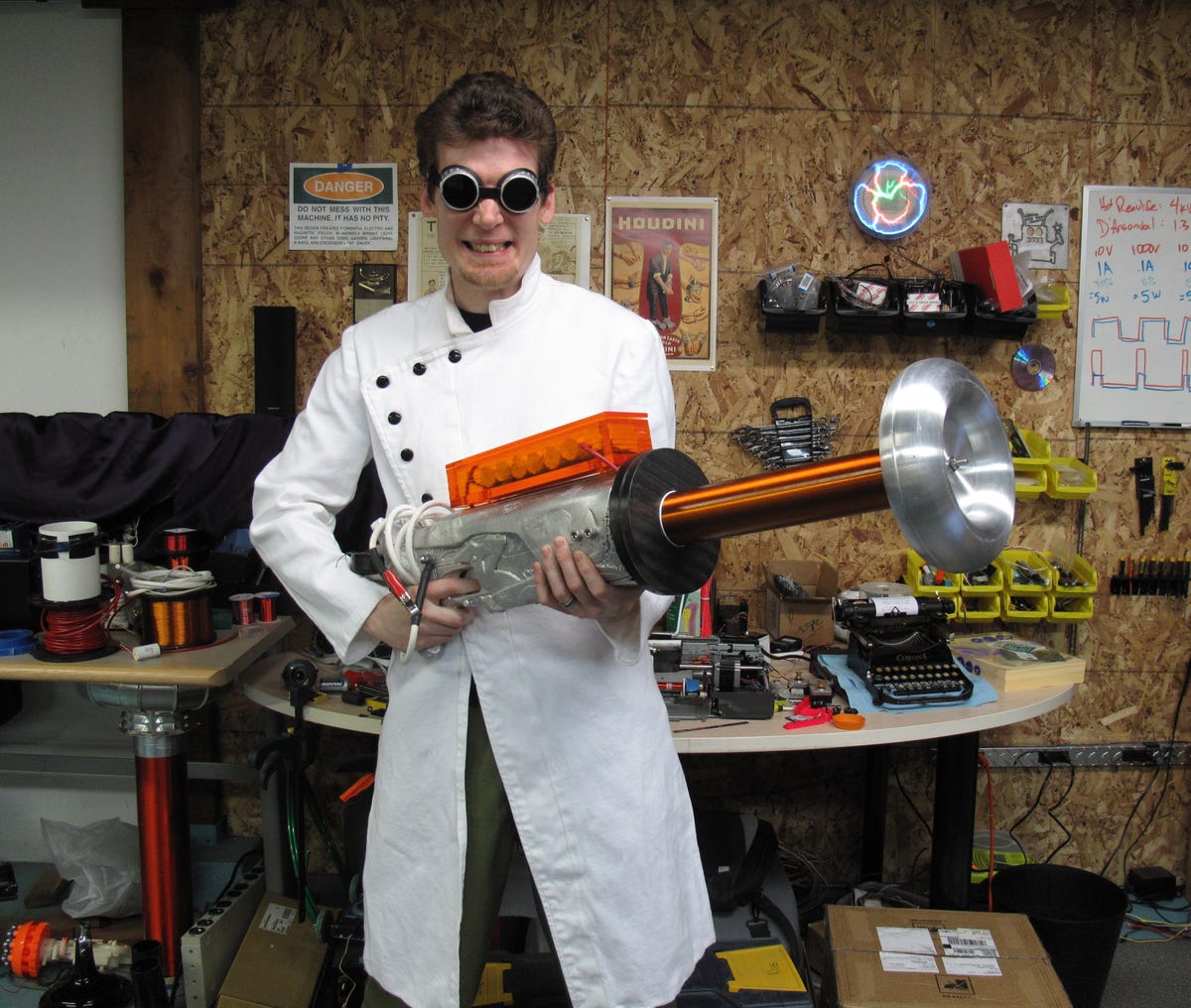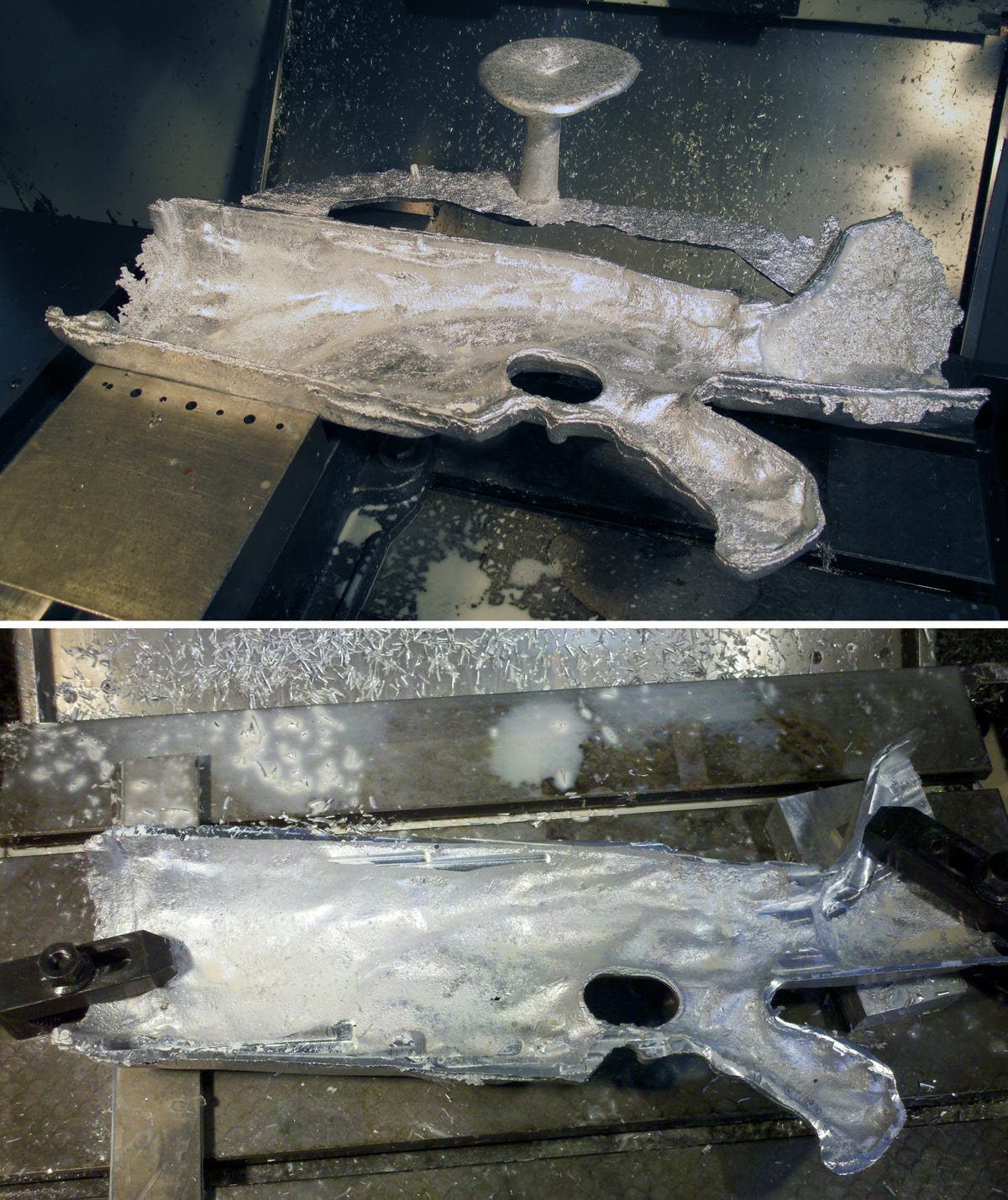Building a Tesla gun (photos)
Crave explores the creation of the Tesla gun, a DIY shooter by Seattle mad scientist Rob Flickenger that tickles (and zaps) our fancy.

Mad scientist
After reading the graphic novel "The Five Fists of Science," Rob Flickenger set out to create a weapon similar to the Tesla coil-packing gun wielded by grandfather of electricity Nikola Tesla on the book's cover.
Flickenger, an author by day and mad scientist by night, wanted to create a dastardly weapon capable of firing thousands of volts of electricity. He enlisted several crafty (and courageous) people in his hometown of Seattle to assist in the process.
Click through our gallery to see the weapon's innards, and a shot of the sparks in action.
It begins..

Before and after
What makes it tick
Even Mr. Wizard would do a double take at the inside of this beautiful DIY weapon. Flickenger used a combination of electrical components to create a Tesla coil gun capable of emitting 20,000 volts.
"The heart of any spark gap Tesla coil is the high-voltage switch," Flickinger wrote on his blog. "It needs to be able to withstand repeated switching events of many thousands of volts at an instantaneous current of a couple of thousand ampere, generating more than a little bit of heat along the way."
Flickenger created a high-voltage switch (the white cone-shaped component) with assistance from Metrix Create:Space, a public workshop in Seattle. The process required using a 3D powder printer to define a mold of the switch. The mad scientist then used a slip-casting process to create the porcelain housing that houses tungsten welding electrodes.
"Since the housing is made of highly conductive aluminum, electrical connections are made with 40kV high-voltage wire," Flickenger noted.
The gun packs several other components, including six capacitors (942C20P15K-F by Cornell Dubilier) and some bleeder resistors to safely store energy.

